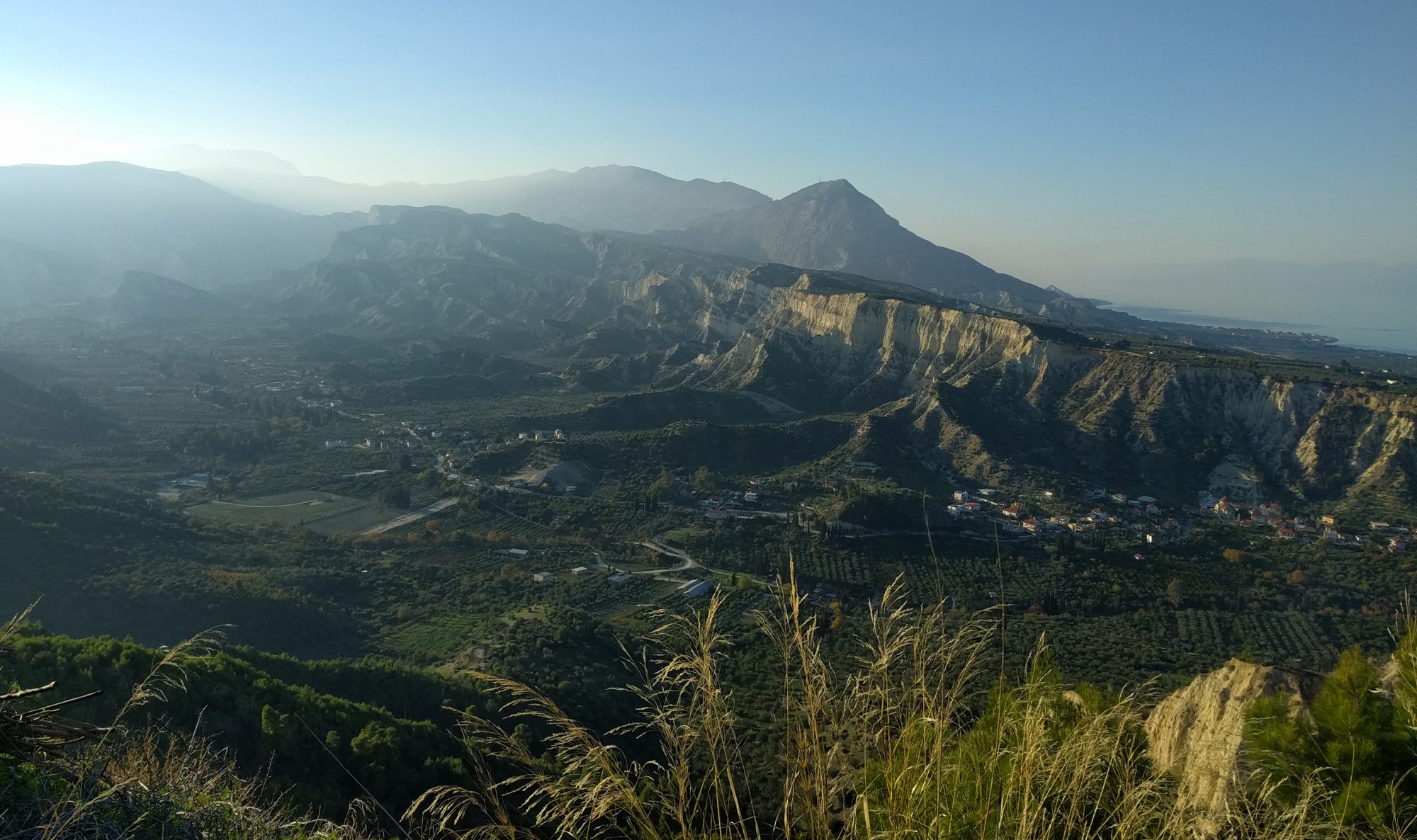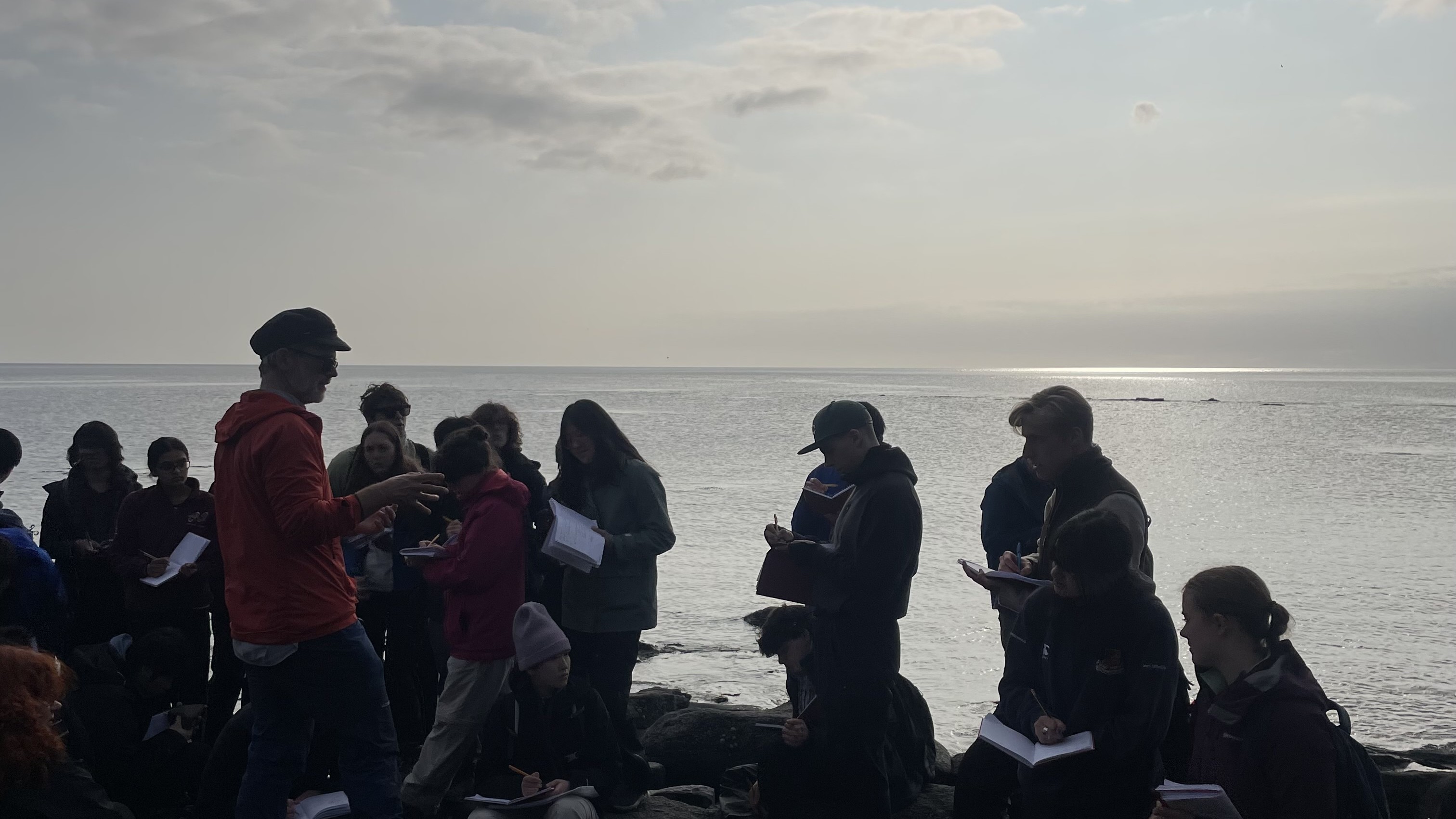“If I were to be trapped on a remote island by an all-powerful geologist for a week, Arran would be near the top of my list for the sheer range and beauty of its history. Trekking across the coast with hand-lens and friends close by was truly memorable and even more so when Ed Tipper used his extensive skillset to try convince us that crinoids grew to the size of a small town.” (Shifat, 1st year Natural Sciences student)
After weeks of lectures, practicals, and plenty of prep back in Cambridge, the long-anticipated first-year undergraduate field trip to the Isle of Arran finally began! This week-long geological journey took us across 600 million years of Earth’s history—from the late Precambrian to the Palaeogene—packed into one spectacular island off the west coast of Scotland.
Day 1: Hitting the Road and the Beach
We departed bright and early from Cambridge, bound for Ayr—a journey that took us 9.5 hours by coach (with plenty of snacks and chatting involved!). After settling into our hotel, we were rewarded with a beautiful beach sunset where we spotted bivalves and snails—modern analogues of the fossils we’d be seeing throughout the week.
Day 2: Pillow Lavas and Folded Rocks
Our first real day in the field was full of excitement. We explored Downan Point under glorious sunshine, examining stunning pillow lavas and learning to infer their orientation using gas bubbles—an excellent introduction to reading the rock record.
At Ardwell Foreshore, we practiced measuring strike and dip in beautifully folded sediments, before wrapping up at Woodland Point where we encountered turbidite sequences with clear cross-lamination (the first of many on this trip).
After a quick ferry ride, we arrived on Arran and were treated to student presentations summarising the day’s geology—a fantastic way to round up the first day in the field.

Day 3: Fulgurites, Fossils, and… Dolphins!
Our first full day on Arran took us along the coast from Corrie to North Glen Sannox. It was a day of time travel—from the Permian red beds (where we found a preserved lightning strike, or fulgurite!) to fossil-rich Carboniferous limestones full of crinoids, brachiopods, and even what might be an Arthropleura trace fossil (a giant myriapod from the Carboniferous period!)

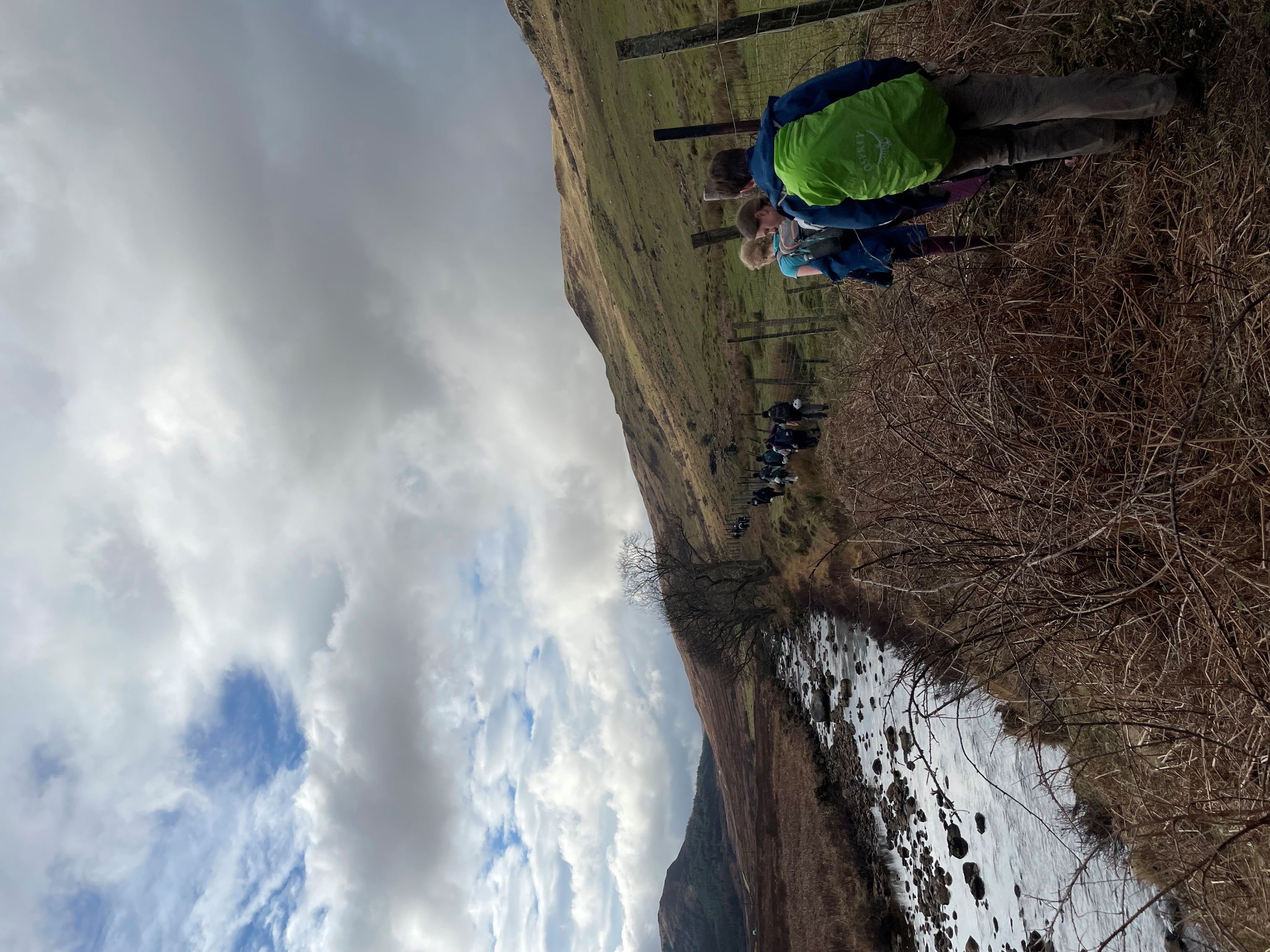
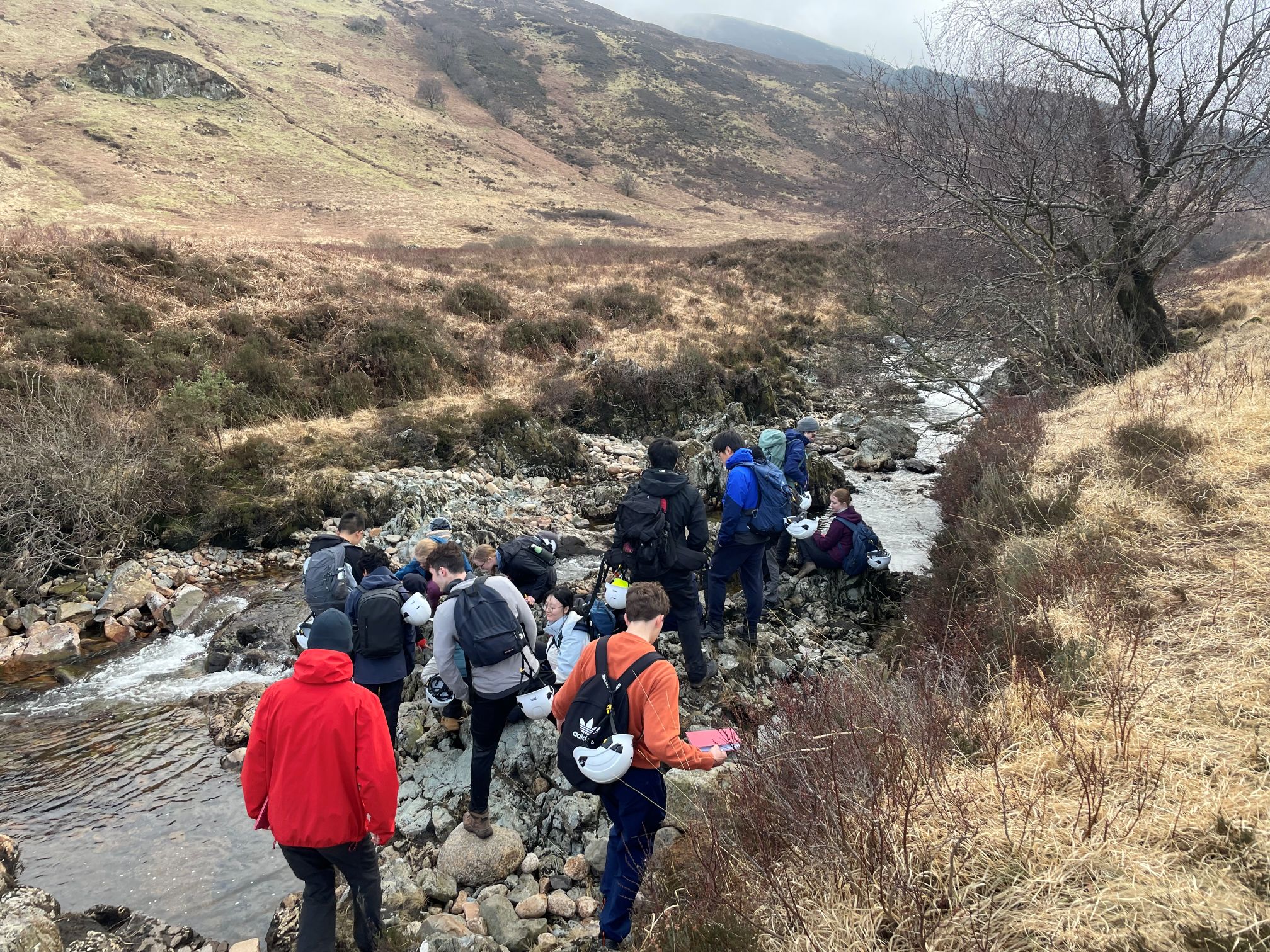
We ended the day exploring conglomerates, lava flows, and less well-preserved pillow lavas, all while sketching and honing our observation skills.
Wildlife highlight: we were lucky enough to spot dolphins and seals just offshore – a magical bonus to an already brilliant day.
Day 4: Across the Island and Through Time
A grand tour of Arran took us from Dalradian phyllites and kink bands in the north to Triassic archosaur footprints and a Palaeogene dolerite intrusion in the south. We covered about 500 million years in a day, saw gorgeous outcrops, and stayed dry despite being in one of the cloudiest places in the UK – an unexpected fieldwork miracle!
Day 5: Hutton’s Legacy and Carboniferous Fossils
Our longest hike (16 km!) took us to some of the most significant geological localities on Arran. At the historic Hutton’s Unconformity, we discussed deep time and the foundations of modern geology. We also explored aeolian sandstones, wadi deposits, and Carboniferous fossil beds with trilobites, brachiopods, molluscs, rugose corals, crinoids, and stunning fenestrate bryozoa. We even found both trace and body fossils of Arthropleura.
The day in the field ended with a scenic hike over the hills back to our base.

Day 6: Magma Mixing and Mingling
We followed the coastline around the Drumadoon Sill, observing intrusive relationships and mingling textures between felsic and mafic magmas. The day included obsidian dykes with flow banding, fossilised archaeosaur footprints in Triassic sandstones and a sketching competition! We also encountered signs of relative sea-level change in coastal caves and wrapped up with a short geological mapping exercise. As always, the day ended with great views—and lots of sheep.
Day 7: Mapping Day
Back in North Glen Sannox, students spent the day independently mapping the area, measuring pH and conductivity of streams over different lithologies, and presenting their results that evening.
It was amazing to see how far everyone had come in just a week!
“I really enjoyed the trip to Arran as it allowed me to see what we had been learning about all year in the real world. This really helped to solidify my learning and develop my observation skills. My favourite day was the mapping day, as although it was challenging, figuring out what was going on, and then collaborating with others was so much fun!” (Francesca, 1st year Natural Sciences student)
“The highlight for me was the day of independent mapping. It felt like a capstone project to the trip, and it helped me understand the utility of all the rock identification we do! It was really cool to be able to formulate our own ideas and hypotheses about the geology (that we couldn’t see under the ground!) just from the field observations we had made.” (Mystaya, 1st year Natural Sciences student)
Final Day: Wet Weather Adventures
Our final day on Arran included three optional activities: a hike up Goatfell (sadly cut short due to bad weather), a more challenging scramble across a volcanic dyke from Glen Sannox to Glen Rosa, or a gentler valley walk with a stop at Brodick Castle Gardens (sadly, no red squirrel sightings due to the weather). Though this was our soggiest day, spirits stayed high—and everyone agreed this trip was unforgettable.

Final Reflections
“For me, the Arran field trip is undoubtedly the most exhilarating part of the whole Part 1A NatSci course. I can still vividly recall the excitement as we pieced all the geological jigsaws together to visualize the whole geological history of the British Isles.” (Jeremy, 1st year Natural Sciences student)
This field trip wasn’t just about rocks. It was about making connections—between geological concepts and real-world outcrops, between students and their peers, and between the past and present.
Whether spotting a dolphin, drawing a cross-section, or discovering a trilobite in the field, each day brought something new and exciting. The students’ enthusiasm and curiosity made this trip truly special.
What are your favourite memories from Arran fieldtrips past? Comment below with your own reflections!

